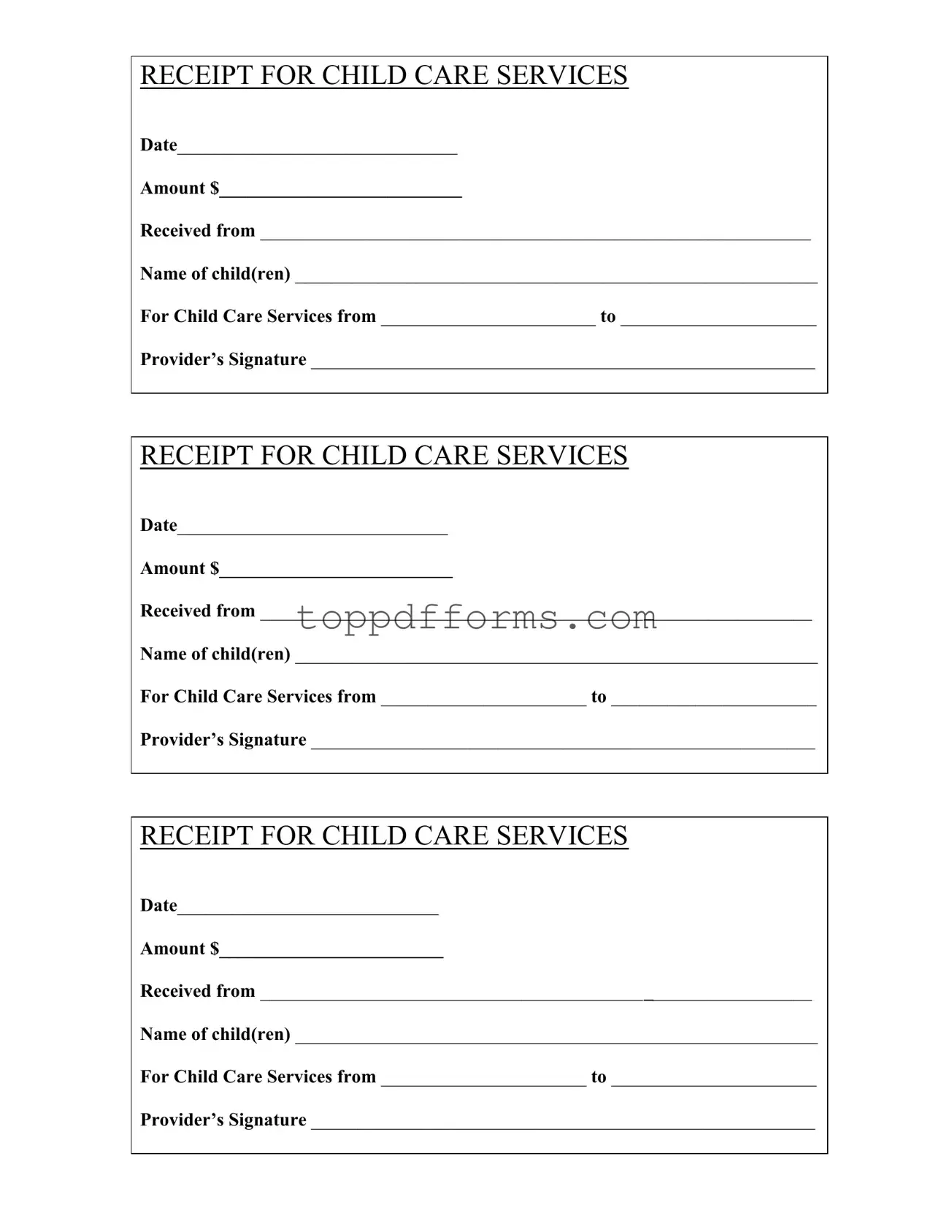What is a Childcare Receipt form?
A Childcare Receipt form is a document that provides proof of payment for childcare services. It includes essential details such as the date of service, amount paid, and the names of the children receiving care. This form is vital for parents who may need to claim childcare expenses for tax purposes or for reimbursement from their employers.
Why do I need a Childcare Receipt?
Having a Childcare Receipt is important for several reasons. It serves as a record of your childcare expenses, which can be beneficial when filing taxes. Many parents are eligible for tax credits related to childcare, and having this receipt can help substantiate your claims. Additionally, it may be required by your employer if you are seeking reimbursement through a flexible spending account or other benefits.
What information is included on the Childcare Receipt?
The Childcare Receipt contains several key pieces of information. You'll find the date of service, the total amount paid, the name of the person who made the payment, and the names of the children receiving care. It also specifies the period during which the childcare services were provided and includes the signature of the childcare provider, which adds authenticity to the receipt.
How do I fill out a Childcare Receipt?
Filling out a Childcare Receipt is straightforward. Start by entering the date of the transaction at the top of the form. Next, write the amount paid for the childcare services. Include the name of the person who made the payment and list the names of the children who received care. Specify the start and end dates of the childcare services provided. Finally, the childcare provider should sign the receipt to validate it.
Can I request a Childcare Receipt from any provider?
Yes, you can request a Childcare Receipt from any licensed childcare provider. It is a common practice for providers to issue receipts for payments made. If your provider does not have a standard receipt form, you can provide them with one to fill out. Just ensure that all necessary information is included for it to be useful for your records.
Is there a specific format for a Childcare Receipt?
While there is no universally mandated format for a Childcare Receipt, it should include essential elements such as the date, amount, payer's name, children's names, service dates, and provider's signature. The form should be clear and legible, making it easy to read and understand for any future reference or tax purposes.
How can I keep track of my Childcare Receipts?
Keeping track of your Childcare Receipts is crucial for managing your childcare expenses. Consider creating a dedicated folder—either physical or digital—where you can store all receipts. Organizing them by date or provider can make it easier to find specific receipts when needed, especially during tax season.
What should I do if I lose my Childcare Receipt?
If you lose your Childcare Receipt, don’t panic. Reach out to your childcare provider and request a duplicate receipt. Most providers keep records of payments made and can issue a new receipt for you. Make sure to explain the situation, and they should be happy to assist you.
